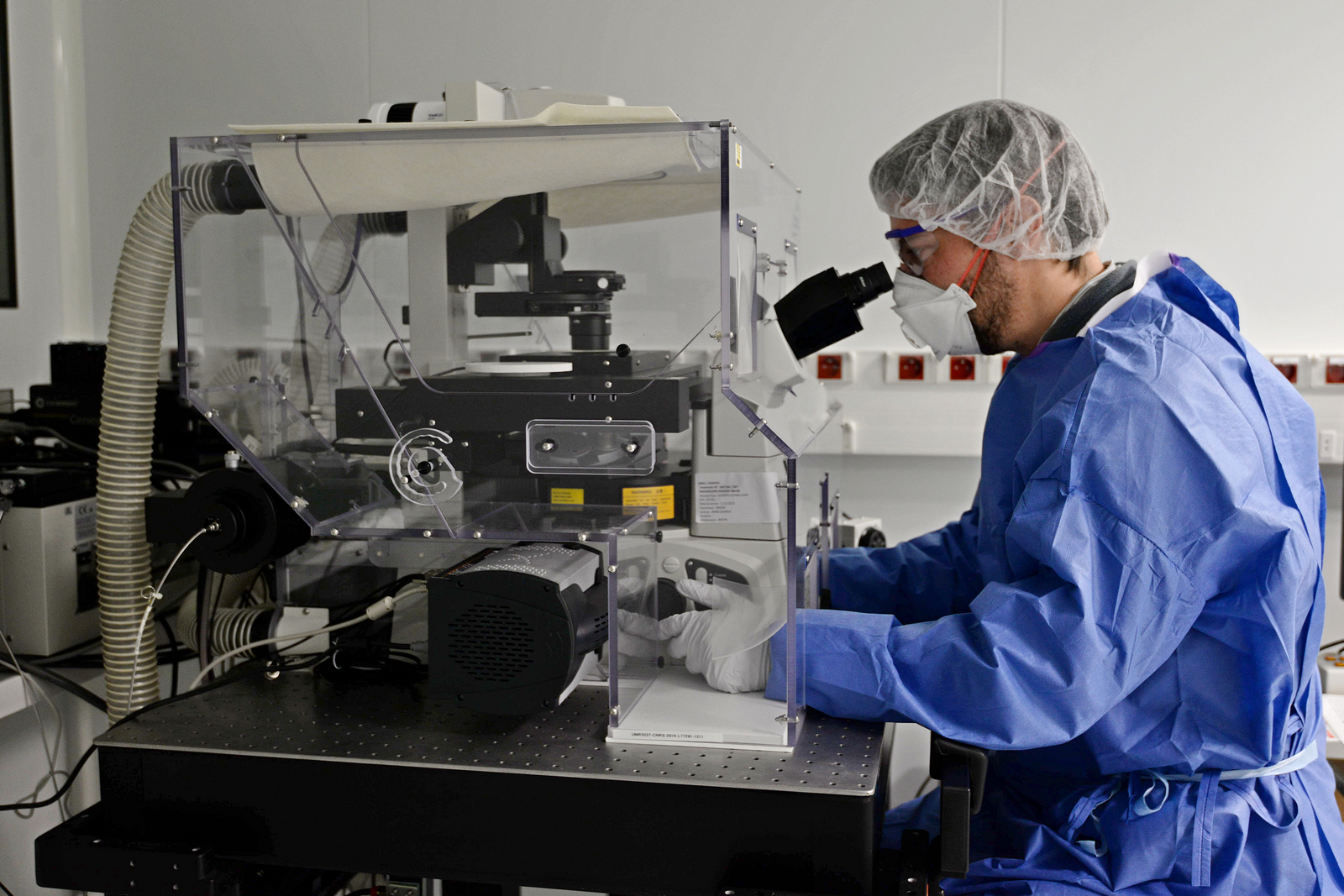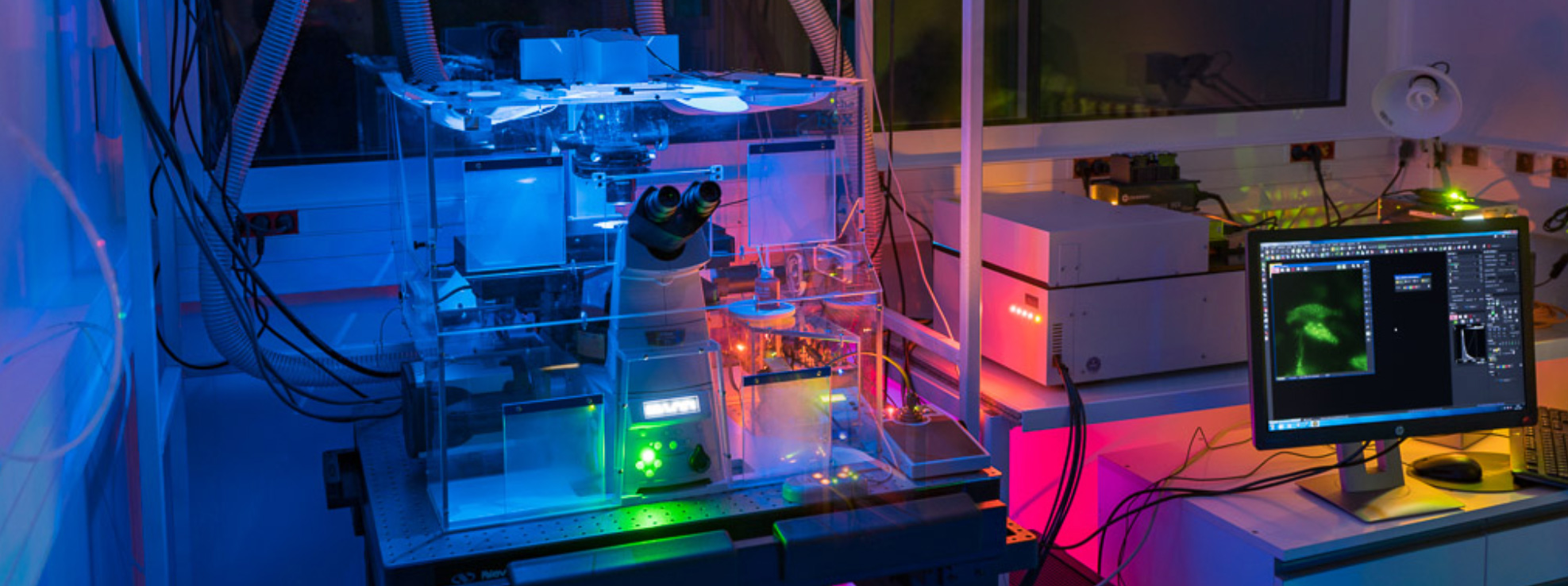Inverted Microscope in TIRF mode for super-resolution PALM-nSTORM and live cell imaging
Our Nikon Ti-Eclipse microscope is equipped with 3 different objectives (20x long WD (1.2 mm), oil immersions 40x and 100x corrected for super resolution imaging) and 5 different filter cubes, 3 classical for blue (Dapi), green (FITC) and red (mCherry) imaging, 2 optimized for super resolution (STORM or PALM w/mEos2). The EM-CCD detector allows fast acquisition in low fluorescence levels. 3 different lasers, namely 405, 488 and 561 nm are fiber coupled to a TIRF module allowing either TIRF excitation or wide-field excitation. A perfect focus system is also available to avoid any z-drift during long time image acquisition.
- Inverted microscope NIKON Ti-E for live-cell data acquisition
- Epi-FI LED illuminator
- Diodes Laser: 405nm, 488nm, 561nm, 641nm / High N.A. objectives for live cell imaging : 20x, 40x, 100x
- Detector: EMCCD Camera IXON 897 (512×512 chip, pixel 16µm)
- Multi-channel (multi-color) image acquisition
- TIRF arm
- Motorized stage XYZ with autofocus system PFS for multi-dimensional time-lapse imaging
- Z-series image acquisition
- Software: NIS
The microscope is inserted into an incubation room to maintain biological viability as long as needed. Acquisition and interfacing software are provided by Nikon.
Publications:
- Full assembly of HIV-1 particles requires assistance of the membrane curvature factor IRSp53
K. Inamdar et al., Elife Jun 11; 10:e67321 (2021) doi: 10.7554/eLife.67321.





 Chargement en cours ...
Chargement en cours ...